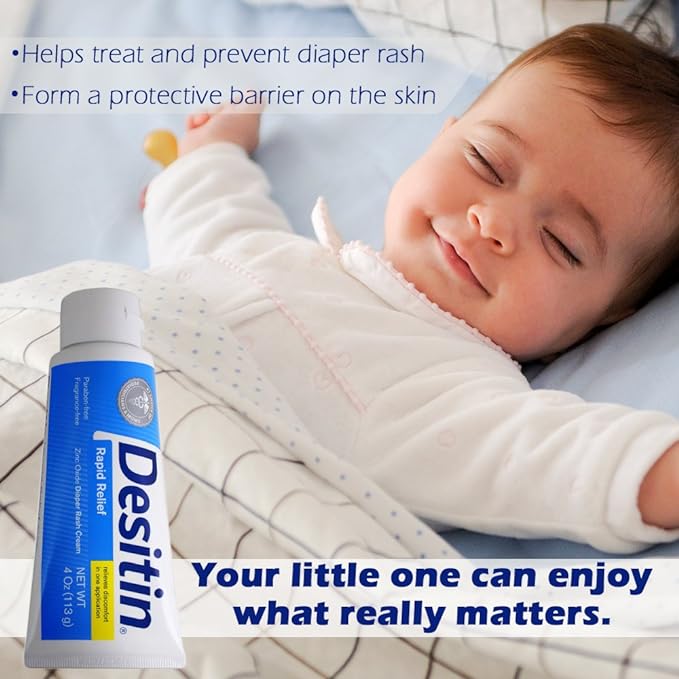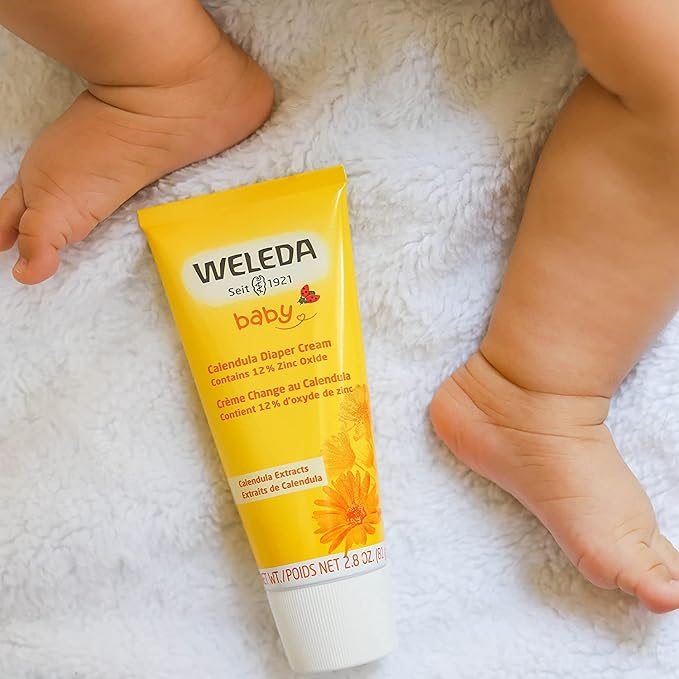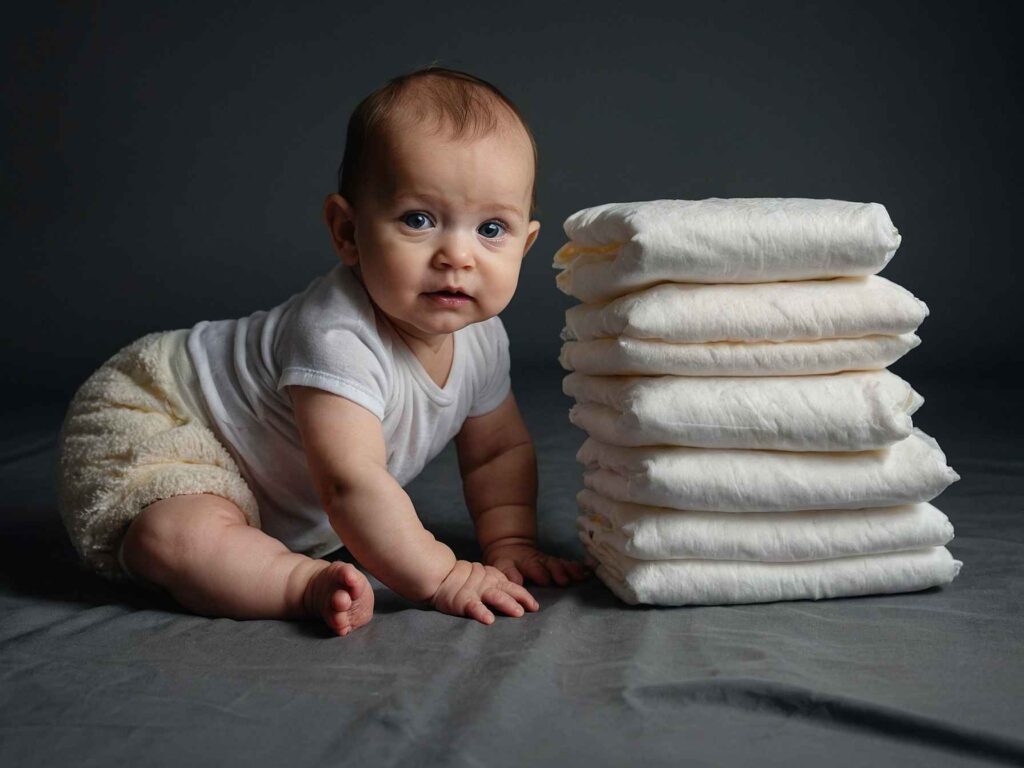Diaper rash cream for cloth diapers should be cloth diaper-safe, avoiding petroleum-based ingredients. Choose creams with natural, cloth-friendly substances to prevent residue buildup.
Embarking on the journey of cloth diapering requires special attention to your choice of diaper rash cream. Parents and caregivers know that an effective cream can soothe and protect a baby’s delicate skin without compromising the absorbency of cloth diapers.
Opt for creams that are free from zinc oxide and petroleum, as these substances can cause repelling issues and reduce the efficiency of the diapers. It is essential to select a formula specifically designed for use with cloth diapers to ensure that your baby remains rash-free while keeping the diapers in top condition. A premium diaper rash cream that is compatible with cloth diapers will not only prevent irritation but also maintain the integrity and longevity of the cloth material, contributing to a happier, healthier baby and a more sustainable diapering routine.
The Delicate Issue Of Diaper Rash
As parents, the wellness of our baby’s skin always tops the list of our concerns. Among the common skin irritations in infants, diaper rash stands out as a frequent issue. It’s a term that often brings a sense of worry, especially for those using cloth diapers. Let’s dive into what causes diaper rash and how to spot it early for the best care of our little one’s delicate skin.
Common Causes Of Diaper Rash
- Sensitive Skin: Babies naturally have sensitive skin that is easily irritated.
- Wetness: Prolonged exposure to moisture in the diaper area is a prime factor.
- Chafing: Friction from tight diapers or clothing can cause rash.
- Irritants: Some laundry detergents and baby products contain harsh chemicals.
- Diet Changes: Starting new foods can change stool acidity, leading to rash.
- Bacterial Growth: Cloth diapers require careful cleaning to prevent bacteria.
Symptom Identification For Early Intervention
Spotting the first signs of diaper rash is crucial for prompt treatment. Early symptoms to watch for include:
| Symptom | Description |
| Redness | Noticeable pink or red patches in the diaper area. |
| Swelling | Slight puffiness in the affected skin. |
| Warmth | The rash area feels warmer than surrounding skin. |
| Tenderness | Baby is uncomfortable and may cry when the area is touched. |
| Blisters | Small bumps or blisters that may seep or burst. |
Quick detection and action can alleviate your baby’s discomfort. Use these signs as a guide to determine the need for diaper rash cream suitable for cloth diapers.
Cloth Diapers Versus Disposable Diapers
Cloth Diapers Versus Disposable Diapers: Choosing the best for baby’s bottom stirs up debate. Cloth diapers, a traditional choice, have seen a resurgence. Modern parents weigh options carefully. Let’s dive into how these choices affect baby’s skin and rash occurrences.
Pros And Cons For Baby’s Skin
Cloth diapers are soft and gentle. They make from natural fibers. No chemicals touch baby’s skin. This means less irritation and happy baby bottoms. But, they require frequent changes to prevent dampness. Damp diapers cause rashes.
Disposable diapers boast high absorbency. They keep moisture away. This promotes dry, rash-free skin. Some disposables have fragrances and chemicals. These may lead to sensitivity and discomfort for some babies.
| Cloth Diapers | Disposable Diapers | |
| Pros | Natural fibersChemical-freeGentle on skin | High absorbencyKeeps skin dryConvenience |
| Cons | Needs frequent changesCan be less absorbentLaundry time | Possible chemicalsEnvironmental impactCost over time |
Impact On Diaper Rash Occurrence
The battle against diaper rash takes a turn with the type of diaper used. Cloth diaper users often switch to diaper rash creams safe for fabrics. These creams avoid harming cloth diaper absorbency.
Disposable diapers may hide wetness too well. This causes delayed changes. Delayed changes increase the risk of rash. Parents must stay vigilant to combat these invisible culprits.
Understanding the signs of wetness and frequent diaper checks play a vital role. Both diaper types need a good diaper rash cream. The right cream keeps baby’s skin protected, rash or no rash.
Choosing The Right Diaper Rash Cream
Careful selection of diaper rash cream is key for cloth diaper users. The right cream can be the difference between a happy baby and a fussy one, as well as ensuring your cloth diapers remain in top condition. Let’s navigate through the sea of options to find the perfect match for your little one’s needs.
Ingredients To Look For
Natural and healing ingredients are your best friends. Here are some safe bets:

- Zinc Oxide – Creates a protective barrier.
- Coconut Oil – Moisturizes and fights bacteria.
- Shea Butter – Soothes and heals the skin.
- Beeswax – Offers additional barrier protection.
- Calendula – Reduces inflammation and promotes healing.
Ingredients To Avoid
Some ingredients can ruin cloth diapers or harm your baby’s skin. Keep an eye out for:
| Ingredient | Reason to Avoid |
| Petroleum | Can cause cloth diapers to repel moisture rather than absorb it. |
| Mineral Oil | Similar to petroleum, it can affect absorbency. |
| Fragrance | May irritate baby’s sensitive skin and cause discomfort. |
| Parabens | Potential allergens and irritants for delicate skin. |
Compatibility With Cloth Diapers
As parents, ensuring the health and comfort of your baby is a top priority. Choosing the right diaper rash cream for cloth diapers plays a crucial role. Not all creams are created equal, especially when it comes to compatibility with cloth diapers. Understand the nuances of what works and what doesn’t to keep your baby happy and rash-free.
Why Some Creams Ruin Cloth Diapers
Diaper rash creams might seem harmless but can have ingredients that damage cloth diapers. Petroleum-based products, for instance, leave a greasy residue that affects absorbency. This residue can also build up in the fibers, making the diapers less breathable and more likely to cause rashes.
- Creates residue – Reduces diaper absorbency and function.
- Impairs breathability – Increases risk of diaper rashes.
- Difficult to clean – Requires special cleaning routines, less practical.
Selecting Cloth-safe Creams
Picking the right cream means reading labels and understanding ingredients. Look for options that are ‘cloth diaper safe’ and free of petroleum. Zinc oxide is a common safe ingredient that won’t ruin cloth diapers. Natural oils like coconut oil can also be a gentle, cloth-safe alternative.
| Ingredients | Cloth Safe |
| Zinc oxide | Yes |
| Petroleum | No |
| Natural oils (e.g., coconut oil) | Yes |
| Fish oil | Varies |
Always perform a patch test with your selected cream on a small area of the cloth diaper. This ensures there are no adverse reactions. Remember, the goal is optimal protection for your baby without compromising the diaper’s integrity.
Application Techniques For Maximum Protection
Application Techniques for Maximum Protection – the right approach can not only ensure your baby’s comfort but also extend the life of your cloth diapers. Diaper rash cream forms a protective barrier on the skin, but using it with cloth diapers requires specific methods to prevent build-up and maintain absorbency.
How To Apply Cream Efficiently
Applying diaper rash cream should be a smooth process that maximizes protection while using minimal product.

- Clean your baby’s bottom with a gentle wipe.
- Dry the skin completely before cream application.
- Squeeze a pea-sized amount onto your fingers.
- Spread evenly across the diaper area.
- Avoid thick layers; they can reduce cloth diaper absorbency.
- Focus on areas most prone to rashes.
- Put on the cloth diaper snugly after cream application.
Avoiding Common Application Mistakes
It’s vital to steer clear of practices that can lead to more harm than good.
| Mistake | Consequence | Prevention |
| Using too much | Build-up on diapers | Apply a thin layer |
| Missing a spot | Potential for rash | Ensure full coverage |
| Rubbing too hard | Irritation of skin | Gentle application |
| Not waiting for dry skin | Reduced effectiveness | Pat dry before cream |
Home Remedies And Natural Solutions
Diaper rash can be a distressing issue. Parents seeking natural solutions often turn to home remedies. These remedies are gentle for the little one’s skin and eco-friendly for cloth diaper users. Here, explore DIY creams and nature’s soothing ingredients.
Diy Creams And Their Effectiveness
Creating DIY diaper rash creams at home can be a fun and rewarding process. These creams often use household items and are easy to make. They come without the worry of harsh chemicals found in some store-bought creams.
- Coconut oil – Known for its antibacterial properties.
- Shea butter – Moisturizes and creates a barrier.
- Beeswax – Adds a protective layer to the skin.
Mixing these natural ingredients can produce a safe and effective cream. Remember to test a small skin area first to avoid allergic reactions.
Natural Ingredients That Soothe Skin
Natural ingredients take the sting out of diaper rash. They’re preferred for cloth diapers as they don’t contain the synthetic chemicals that can reduce the absorbency of the fabric.
| Ingredient | Benefits |
| Oatmeal | Calms inflammation and itchiness. |
| Aloe Vera | Cools and heals the skin. |
| Witch Hazel | Reduces swelling and fights bacteria. |
Parents can apply these ingredients directly or infused in baths. A gentle application to the affected area provides relief. Always choose pure and organic options for the best results.
Prevention: Beyond The Cream
When it comes to your little one’s comfort, preventing diaper rash is key. It’s not just about the cream you use; it’s about a holistic approach to your baby’s health and the proper care of cloth diapers. Let’s explore some preventive measures that go beyond the cream to keep your baby’s skin happy.
Diet And Hydration For Healthy Skin

What your baby eats and drinks plays a vital role in skin health. A balanced diet ensures the right nutrients reach your baby’s skin.
- Breast milk or formula is essential in early months.
- Introduce skin-friendly foods like fruits and vegetables as your baby starts on solids.
- Keep your baby hydrated with small amounts of water when appropriate.
Cloth Diaper Care And Maintenance
Proper cloth diaper care is critical in rash prevention. Follow these guidelines to maintain their efficacy:
- Use a gentle, fragrance-free detergent.
- Rinse diapers thoroughly to remove all traces of soap and waste.
- Change cloth diapers frequently to keep your baby’s skin dry.
- Consider a diaper liner for easier cleanup and added protection.
By maintaining a healthy diet for your baby and taking care of your cloth diapers, you can prevent the causes of diaper rash.
The Pediatrician’s Role In Diaper Rash Treatment
Diaper rash is a common issue in babies, causing discomfort and irritation. It’s crucial to use the right cream, especially when dealing with cloth diapers. A pediatrician’s guidance ensures the treatment is both safe and effective. They can recognize whether a rash demands simple remedies or prescription-strength intervention.
When To Consult A Doctor
Here are signs indicating it’s time to seek a pediatrician’s help:
- Rash persisting over 48 hours
- Appearance of pus or blisters
- Baby showing signs of discomfort or pain
- Presence of a fever
A doctor will assess the rash and provide the best course of action.
Prescription Creams And Recommendations
Pediatricians may prescribe stronger creams if over-the-counter options aren’t enough. These may include:
| Prescription Cream | Active Ingredient | Usage Instructions |
| Hydrocortisone cream | Steroid | Apply a thin layer as directed |
| Antifungal ointment | Medication for yeast | Use as prescribed until rash clears |
Follow the pediatrician’s recommendations closely to ensure the health and comfort of your baby.
Real Parent Advice: Tips And Tricks
Welcome to the treasure trove of Real Parent Advice: Tips and Tricks on finding the perfect balance when dealing with diaper rash, especially for the cloth diapering community. Parents have trodden this path before, and their collective wisdom is nothing short of invaluable. Discover tried-and-true methods to protect your baby’s delicate skin, along with firsthand success stories and notes of caution.
Community Recommendations For Creams And Care
Battling diaper rash with cloth diapers in play requires choosing the right products. Gentle, cloth-safe creams work best, and here’s what our community swears by:
- Zinc Oxide-Free Creams: They are gentle and won’t compromise cloth diaper absorbency.
- Homemade Balms: Simple recipes with coconut oil and essential oils can be both safe and effective.
- Disposable Liners: These can be used with rash creams that aren’t cloth-diaper-friendly.
Success Stories And Cautionary Tales
Learn from parents who’ve mastered the art of rash prevention:
| Story Type | Parent Experience |
| Success | Regularly changing and choosing natural fiber diapers kept rashes at bay. |
| Caution | Using a non-cloth-safe cream led to build-up and reduced absorbency. |
Careful attention to diaper change frequency and proper cream selection has proven pivotal. Remember, each baby’s skin is unique; monitor closely and adjust your approach as needed.
Future Innovations In Baby Skin Care
Baby skin care leaps forward with innovation. Parents seek the best for delicate skin. Cloth diapers are cozy and kind to the planet. The right diaper rash cream pairs with them is crucial. Future products promise more than protection. They aim for eco-friendly excellence.
Emerging Products On The Horizon
The sweet joy of innovation waves a flag for future products. Diaper rash cream is undergoing a transformation. New formulas emerge, blending science with nature. These anticipate baby skin needs. The market is ready for surprises:
- Smart creams that adapt to skin moisture levels
- Natural enzymes to strengthen skin barriers
- Probiotic complexes for a balanced dermis
Eco-friendly And Skin-safe Advances
The green revolution shapes baby care. Tomorrow’s creams will excel in safety and earth care. Look forward to:
| Feature | Benefit |
| Biodegradable Ingredients | Kind to Earth, leaves no trace |
| Reusable Packaging | Cuts waste, promises reuse |
| Non-toxic Formulas | Ensures ultimate safety for babies |
Such creams will change our world. Cloth diapers and creams unite for a healthier tomorrow. The future is clear, skin-safe and eco-friendly matter.
Frequently Asked Questions Of Diaper Rash Cream For Cloth Diapers
Can Cloth Diapers Cause Rashes?
Using cloth diapers does not inherently cause rashes, but improper laundering or the build-up of detergent can irritate a baby’s sensitive skin.
What Ingredients To Avoid In Diaper Creams?
Avoid petroleum-based, fish oil, and menthol ingredients in diaper creams for cloth diapers; they can reduce the absorbency and damage the fabric.
How To Choose Cloth Diaper-friendly Cream?
Opt for a cream that’s free of zinc oxide or petroleum, as these are cloth diaper-friendly and wash out easily, preventing repelling issues.
Does Diaper Cream Affect Cloth Diaper Absorbency?
Yes, certain diaper creams can lead to absorbency issues due to their ingredients creating a barrier on the cloth diaper’s surface.
How Often To Apply Rash Cream With Cloth Diapers?
Apply rash cream as needed but sparingly and choose a cloth diaper-compatible formula to avoid build-up, ensuring the effectiveness and longevity of your diapers.
Conclusion
Navigating the world of cloth diapers can indeed be complex. Choosing the right diaper rash cream is crucial for your baby’s comfort and diaper longevity. By considering ingredients, compatibility, and barrier strength, you can safeguard your little one’s skin. Always opt for creams tailored for cloth diaper use to ensure effectiveness and fabric care. Remember, a happy baby equals a happy parent!












Leave a Review